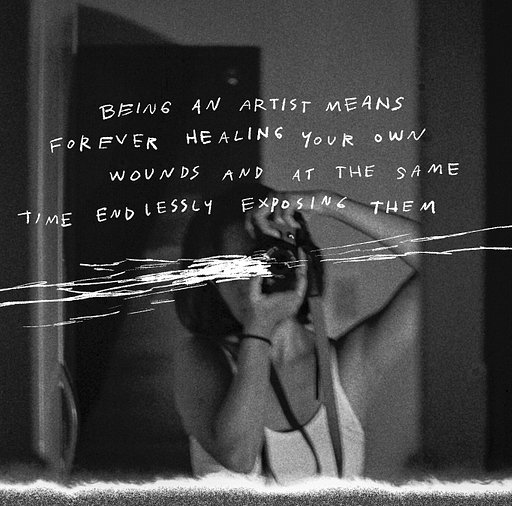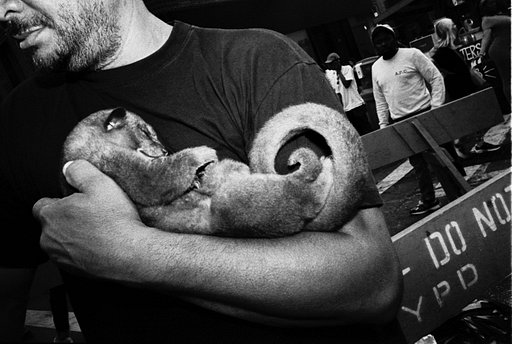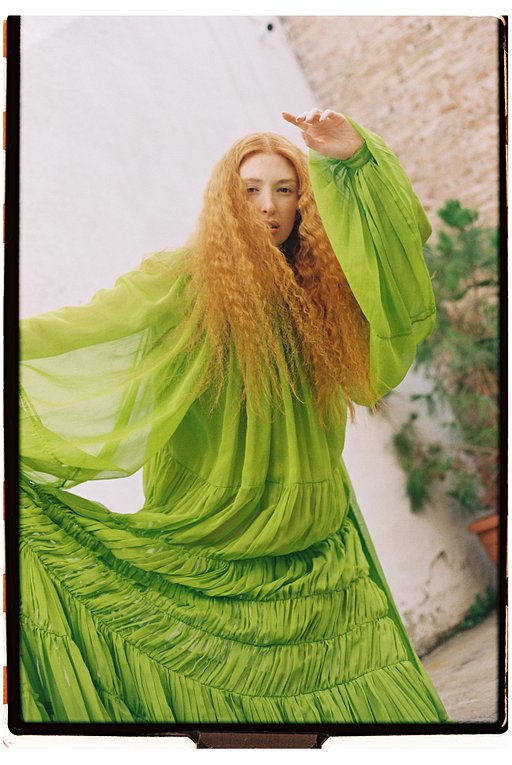A Maze Into the Moment — An Interview with Shaun LA
5 11 Share TweetPhotography, like many art forms, has many interpretations. One artist's understanding of this medium may differ from another’s, and that's what makes it such a personal craft. No two photographs, like the photographers who took them, are exactly alike. We were lucky enough to have street photographer Shaun LA chat to us about his relationship with photography.
Hello, Shaun! Welcome to the Magazine. What do you do and what got you started shooting with film?
I am a photographer from the streets to the studio. A little over 20 years ago, I picked up a disposable camera and this guided me into photography. I am an autodidact when it comes to photography. A lot of my learning about this medium came through a desire to learn, which I would consider a direct dedication. I am 40 years old right now and the energy to keep learning about film is something which is always newly ambitious.
How would you describe photography? What do you like most about it?
It is a medium that is still maturing. Personally, I think there are growing pains that come with this medium because it has not been around that long. The US Constitution is older than photography. In my opinion, photography is in a wonderful position with its overall age. I would have to say that one of the things I like most about photography is the process, which involves, loading my film camera as well as being a potential observer for photographing life.
Even in a studio session, where the individual being photographed knows that you are there to take their picture, the intrigue is there for me — my eyes, the camera's eye, as well as the process that will explain what was viewed when the roll of film is processed and developed. For me, it is a medium with an instant timer to frame a moment, but with no promise of predictability. Personally, I call this entire process, a maze into the moment. I love going through this maze.
What inspires you to take photographs?
A very powerful question, thank you for asking me this. Lifting up the camera, seeing something or feeling the visual vibe — that would be the chief inspiration for me. Again, photography is a medium that does not have a lot of history behind it; therefore, I cannot really go to other mediums to find inspiration in terms of wanting to photograph a person, place or thing, especially since I only have practiced photography. When it comes to my inspiration, I can only react to being a film photographer, from there, knowing that the next photo will be another form of education for my experiences to gel into my continuous need to learn about photography.
Now, in general, life inspires me. Photography has a massive amount of space in my life, but I am not the photographer who wants their photographs to look like a painting or have a musical or literary message inside of them. I do love the arts, but as a spectator — when I look at other mediums, I do not size up a piece, wondering how it could be recycled as a photograph.
What would you like to communicate to your viewers with your images?
Emotions. I see my photography in a way that has me as an insider, but I would still want my photography to invite an emotive reaction; thoughts as well as the undivided attention of an outsider looking in. I fully understand that this is a bold communicative desire that I am requesting because photography is instant gratification in every degree of its existence, due to it naturally being compared to the time it takes to paint or draw.
Street photography, as an understatement, is challenging. How do you keep up with its fast pace?
I grew up in Baltimore, an inner city that has a fast pace. It was 1990s Baltimore to be exact. New York City is five Baltimore cities in one. The streets remind me of my childhood, where an inner-city upbringing can make one see life from a faster-than-normal and mature perspective. I consider growing up in an inner city to be an energetic part of me that tuned up my senses to hear, see, touch, taste, smell the streets. Plus, I have a balance — when photographing in a studio or if I am selected to photograph an event, the pace slows down. Knowing my gears has helped me to pace myself. Yet, the streets can be very time consuming, because you do not want to miss anything. However, you have to realize that if you have a new day, you can see new ways. It is about balance along with energy.
What's your favorite thing about capturing scenes of real life?
The moment! There are times when I do not have a chance to fully understand what I have photographed until I am processing and developing the rolls of film. There is this jolt of appreciation, a new mental thinking, each time I see what I have photographed, or at times when I revisit what I have photographed — I have overlooked frames in the past. The revisit will slow me down, teach me what I missed.
In your opinion, what makes an image worth a second look?
The life of what was photographed, then the technique followed by the technical. I think that photography is a “technique core” kind of medium. Of course, highly technical, clever inventions in photography can easily remind us that the gadgets are more popular than the basics that arrive with a photographer's individual technique.
What elements do you look for in a scene before you hit the shutter?
It is a feeling. I would not say it is hard to describe. However, I feel it — a sensitivity or sense of direction that comes to me; all of this happens without premeditated thinking. At least, it does not happen this way for me — it is a reflex, a reaction. In the studio, I am a bit more patient than I am on the streets, but my photographer's instinct is always prepared. Even when I do not have a camera, I am looking as well as seeing.
Who is your favorite artist/photographer and why?
I do not have one. Yes, I know that this may sound like a quick answer. Yet, I do have favorite groups in photography, the word group could be close or loose. Group f/64, the Photo League, Les Groupe des XV, the FSA. Photography kind of sways away from movements that we see in paintings or hear in music as well as read in literature. Even though the photographer is typically on a solo mission, I find the philosophies where photographers have their own eye but agreements or disagreements with one another, defending visual doctrines to be progressively fascinating.
If you could shoot with one camera and film, what would it be?
Another thought-provoking question which I like. On any given day, I could change my answer with this kind of question. However, right now, I would have to say the Pentax 67. Load it up with a roll of Ilford Delta 100 speed, 120 film. You see, these kinds of questions are loaded in a fun way, because it makes me think as in, if I could go back in time, I would ask for a Kodak Medalist as well as a roll of Kodak Super XX from back in the 1950s, way before my time. Yet I listen to the stories of the photographers who are older than me, when they tell me their past experiences with film, it stays with me.
What's next for Shaun LA? Please share it to our readers
I am working on a book of essays about photography, it is an ongoing project. My book will travel into the depths and outskirts of the intellectualism that comes with photography, that kind of brain is in this medium. Also, I am looking into exhibiting my photography. I have not done an exhibition in about seven years, which is my kind of speed, because it gives me a chance to see my expansion, visually. Aside from this, I will be photographing portraits, paid sessions, events, the studio, the streets.
Lastly, is there anything you would like to say to fellow film photographers and enthusiasts?
Love photography. This medium needs as much appreciation as it can get from photographers, enthusiasts, collectors, curators, teachers, debaters, and writers. If you are a film photographer, continue to support your favorite film brand or brands, film cameras, visit sites which are encouraging film photography like Lomography, Film Shooters Collective, and Emulsive.
Also, if you are a new photographer, do not get siphoned into thinking that a lot of likes, a large following or viral success is the zenith of defining good or great photography. Yes, the attention that comes with viral success along with massive amounts of likes and shares are rewarding encouragement, but there is more to this medium than that just that. If you are fortunate enough to market yourself successfully, great — keep going in such a direction. However, always remember that the humble roots in this medium journeys back to Nicéphore Niépce waiting hours for the latent image with chemicals to appear on his tangible material back in France during the late 1820s. This kind of humbleness, as well as patience, can remind us that we can all be a part of photography in a productive, successful way.
We would like to express our gratitude to Shaun for letting us use his images in the Magazine. If you're interested in his work, head over to his website for more.
written by cheeo on 2018-10-09 #culture #people #interview #street-photography #artist #feature #shaun-la





























4 Comments